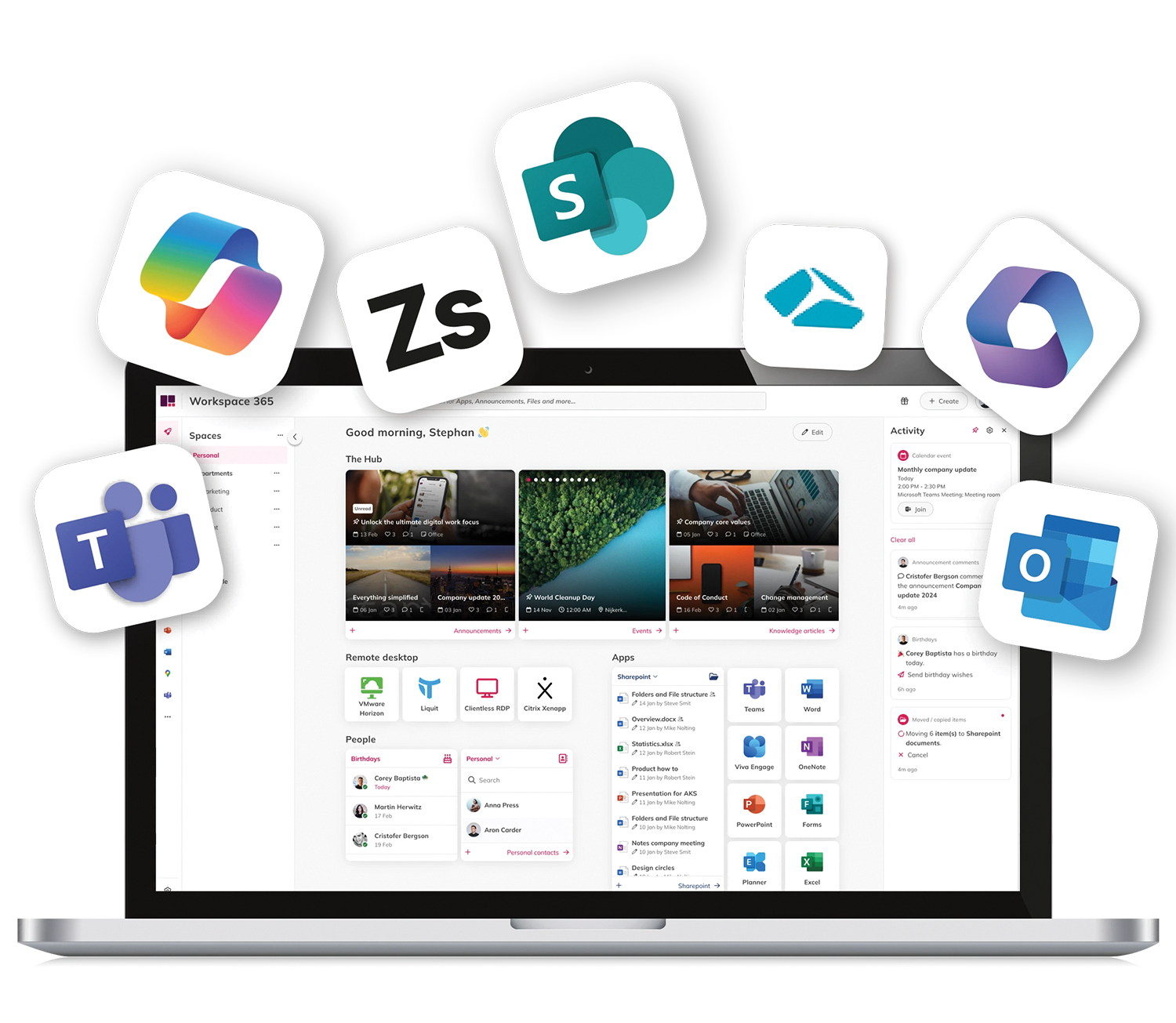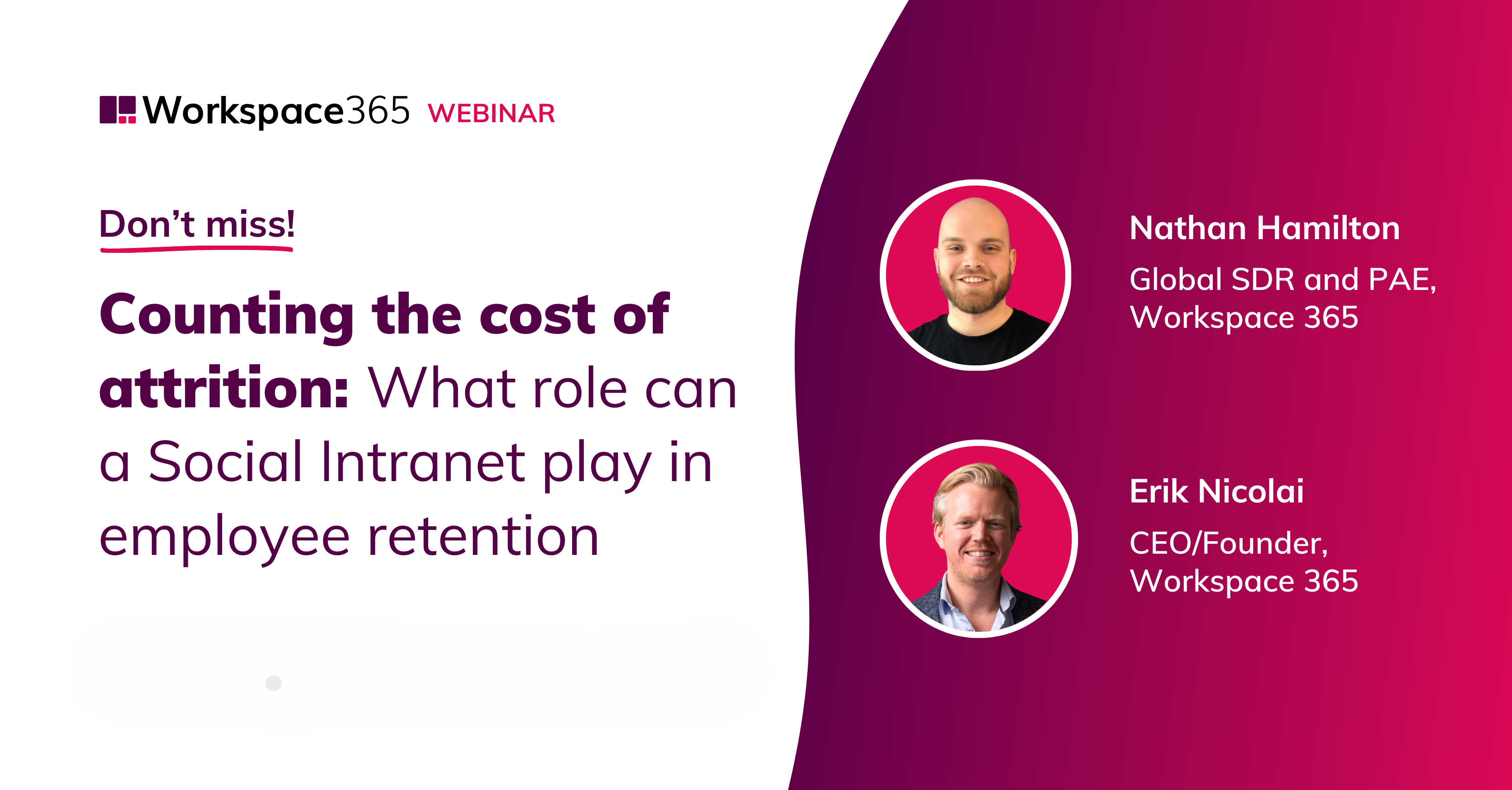In these times of high employee turnover and an even higher escalating War on Talent, the digital employee experience (DEX) is rapidly escalating on the priority lists within C-level. The following 10 elements and characteristics prove that the DEX within your organisation is at a consistently high level.
DEX: technology satisfaction indicator
Simply put, DEX is about all the experiences employees have with technology within an organisation. Technology can lead to great satisfaction and tremendous productivity, but it can also easily lead to frustration, stress and time lost. Employees are often annoyed by, for example, multiple versions of a document circulating or not having the right tools.
Focussing on DEX is a sensible strategic decision in the current labour market. After all, DEX can be decisive in hiring or keeping a job. Almost one in five Dutch people are currently even considering quitting their jobs because they do not have the right technology to be productive, according to research by Ivanti. The following 10 elements illustrate that your organisation's DEX is doing just fine.
#1 Everything in one place
A Harvard Business Review publication reveals the rate at which employees switch between applications quickly runs up to thousands of times a day. Needless to say how much frustration this causes. To provide employees with a good technology experience and productive working day, it is important to unify all systems, applications, workflows, documents and information in one place. A modern digital workspace such as Workspace 365 makes this possible.
If your people have all their collaboration tools, document management systems and social functionalities (instant messaging, a personnel search function and (parts of) the intranet) as well as all documents, processes, tasks, data from systems and other information available within one environment, they will be happy with the technology they are using. They are always up-to-date because they have all communication and information in one central location, and they can work together seamlessly and exchange information with team members and colleagues from other departments.
Workspace 365 combines everything your employees need in a single workspace, where thanks to Single Sign-On they can access everything within a single click. Thereby, it is even possible to integrate legacy software and offer it in a unified way.
#2 Seamless HR-, IT- and other business functions
Digital employee experience is all about seamless technological experiences. And that also means allowing different essential processes to come together in a seamless way, without constantly switching between platforms and applications. With a digital workspace, this can become a reality as workflows from different systems can be brought together in one environment smartly. Think of it as the fastest way from A to B, to get work done faster.
A digital workspace such as Workspace 365 offers the ability to integrate processes and handle tasks directly via Micro Apps, which allow employees to easily handle tasks without leaving the workspace. These are often tasks in finance, HR or IT, for example, leaving requests and support tickets or submitting claims. As people frequently spend unnecessary time on such tasks, they greatly welcome technology that facilitates this.
An interesting development in this respect is Microsoft's low-code Power Platform. With Power Apps, companies can develop their own applications that solve tangible business challenges relatively easily, while with Power Automate, organisational processes can be automated. Both are very effective in combination with a digital workspace.
#3 Self-service that matches employee skills
On paper, self-service is a powerful means of achieving an ultimate DEX. If people can submit leave requests or service tickets themselves, they are less dependent on, for example, the opening hours and waiting times for departments such as HR and IT. However, the extent to which self-service is required must match your employees' digital skills. It that’s not the case, then they get frustrated and your departments become overloaded with support tickets.
Therefore, the aforementioned match is important, so monitor this thoroughly and on an ongoing basis. Perhaps more importantly, self-service processes should be set up as simply and intuitively as possible. It is also important to provide the right support for self-service issues. For example, integrate a chat function into the workspace that allows them to get in touch with an HR or IT employee.
#4 No shadow IT
DEX and shadow IT are natural enemies. When people are not satisfied with the technology at hand, they reach for their own applications and devices. That is a serious problem for many organisations: previously mentioned Ivanti research also shows, for example, that 52 per cent of Dutch employees claim to spend their own money on technology to be more productive. Shadow IT is therefore by definition a sign that something is wrong with your DEX.
This brings to light an important side benefit of DEX: security. After all, fewer self-selected SaaS applications or proprietary tablets roaming around the organisation also means fewer security risks.
Incorporating legacy, well-loved and still functional applications into the workspace reduces the need for shadow IT. With a Workspace 365 hybrid workspace, you can easily integrate (legacy) applications running on virtualisation platforms such as Azure Virtual Desktop and Citrix Workspace into your workspace environment. With Clientless RDP you can also add individual applications, which are streamed remotely in the browser.
#5 Automatic path to safety
To build on that security: good technology also directs employees to the most secure choices almost automatically. Security measures such as multi-factor authentication are offered in an approachable and intuitive way, optimising adoption. Smart technology can also prevent unsafe situations, for instance, through conditional access. Within the digital workspace, this means that certain sensitive information cannot be accessed from outside the corporate network, for instance.
Helpful tools for employees also generally imply that workspace administrators can set up security to become an intuitive process. The consequence for employees is that they no longer have to think about security themselves, which saves them stress and results in a better DEX.
#6 Different departments and end users involved
Technology is ultimately there for the end user. DEX should not only involve the IT department. For example, it is also important that the communication and HR departments have their say. HR, for instance, has lots of ‘feelers’ out among current and future employees.
Also and above all, the different types of end users should be part of the DEX optimisation. By using surveys, interviews, data analysis and workshops, for example, you can monitor the DEX on an ongoing basis. As for the digital workspace, you can integrate analytics. All this can generate new requirements, which IT must then realise.
> Why HR must be involved with the digital employee experience
#7 Training and support
New tools are nice, but useless if they are not used properly. In organisations with an optimal DEX, employees are included in the adoption of new technologies and frequently trained on their digital skills. That training focuses not only on the technology itself, but also, for example, on productivity coaching and dealing with the large amount of information and notifications. After all, being able to cope with technostress is an entry requirement for a good DEX.
Support is also important. If people have questions about the technology they are supposed to use, they should be able to seek support in an approachable way. This can be done by integrating a chat function or IT service management system into the digital workspace, for example.
#8 IT-onboarding as a kick start for DEX
Many companies do not have their onboarding in order, which is killing the DEX. In fact, a survey by VMware found that only 17 per cent of people have all the tools and technologies they need on their first day of work. On the contrary, organisations with the best DEX ensure that IT is included in onboarding. New employees then learn how to use technology right from the start and can thereby work productively - and happily - from the start.
#9 Depersonalised IT
IT is tailored to different user groups or even individuals... In times of machine learning and advanced analytics, it sounds obvious, but it is far from reality. Thanks to artificially intelligent, self-learning technologies, the digital workspace can be personalised for employees. Apart from displaying relevant applications and information, you can think, for example, of a workspace that always prompts you to register your hours at the right time.
Modern digital workspaces such as Workspace 365 are adaptive and highly customisable. Based on conditional access, for example, the workspace can be customised for individuals and groups, but it can also adapt itself based on a person's role, location, device and browser.
#10 Monitoring, monitoring, monitoring
DEX is an ongoing process, it has no finish line. It would be great to achieve the optimal DEX, but tomorrow your employees' needs may have changed, new frustrations may have arisen or promising new technologies may have been launched. Constant DEX monitoring is therefore important. Only by constantly asking departments and end users what they want and miss, can you guarantee an optimal DEX in the long term.
DEX done right
The digital employee experience is becoming an increasingly important tool for companies. Not only to tackle personnel problems but also - as we have shown in this article - to become more productive, make HR, IT and other business processes more efficient and increase security.
So, while the DEX may initially seem like a one-dimensional gimmick, it is in fact a tool (if deployed correctly) can deliver a high return on investment (ROI) company-wide. From everything in one place and seamless processes brought together in one environment to training, support and IT onboarding. Creating the ultimate DEX delivers a lot, but also takes continuous effort.
Do you want to discover more about Workspace 365? Feel free to contact us.







